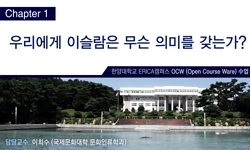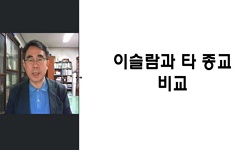This study seeks to account for the persistence of Islam in allegedly secular endeavors, the combative stance toward the empire’s perceived enemies, the Western powers in particular, and the critical role of Ottoman agency in this period. Restoring ...
http://chineseinput.net/에서 pinyin(병음)방식으로 중국어를 변환할 수 있습니다.
변환된 중국어를 복사하여 사용하시면 됩니다.
- 中文 을 입력하시려면 zhongwen을 입력하시고 space를누르시면됩니다.
- 北京 을 입력하시려면 beijing을 입력하시고 space를 누르시면 됩니다.
https://www.riss.kr/link?id=A82355169
- 저자
- 발행기관
- 학술지명
- 권호사항
-
발행연도
2010
-
작성언어
Korean
-
주제어
오스만제국 ; 근대화 ; 이슬람 ; 서구화 ; 탄지마트 ; 압둘하미드 2세 ; Ottoman Empire ; Islamic Modernization ; Westernization ; Tanzimat ; Abd?lhamid Ⅱ
-
KDC
920
-
등재정보
KCI등재후보
-
자료형태
학술저널
-
수록면
72-108(37쪽)
-
KCI 피인용횟수
2
- 제공처
- 소장기관
-
0
상세조회 -
0
다운로드
부가정보
다국어 초록 (Multilingual Abstract)
Until now, the resulting fusion of influences and its experimental, transitory nature has been little appreciated because they have not conformed to the prevailing notions of Western influence and Eastern passivity. In the certainty of historical hindsight, it has become all too easy to forget that even in the latter years of the Ottoman Empire, the so-called Sick Man of Europe was hardly preparing his grave. As numerous scholars have pointed out, the teleological examination of Ottoman decline has all too often obscured the continued political might of the empire. Rather, faced with the internal threat of national fragmentation as well as the external threat of European imperial aspirations of conquering its territories, the Ottoman government was eager to forge a new identity with which it would be able survive into the modern age. A wariness of Western encroachment of all kinds translated into a more combative approach to the West in general and a more selective adaptation of its institutions. Seen in this light, Westernization was not just a matter of importation. Rather, it was a complex process of acculturation, in which Western ideas, manners, and institutions were selectively adopted, and evolved into different forms set in a different context.
This study seeks to account for the persistence of Islam in allegedly secular endeavors, the combative stance toward the empire’s perceived enemies, the Western powers in particular, and the critical role of Ottoman agency in this period. Restoring the notion of agency is vital to overcoming the misperception that outside influences determined the “fate” of the late Ottoman Empire. The policies of the state were often reactive, its room for maneuver was clearly limited, and gaps existed between the ideal expectations and actual results, yet it is important to remember that Ottoman policy was committed to creating its own solutions and that these solutions did not necessarily conform to Western models or Westernizing historical perceptions.
Until now, the resulting fusion of influences and its experimental, transitory nature has been little appreciated because they have not conformed to the prevailing notions of Western influence and Eastern passivity. In the certainty of historical hindsight, it has become all too easy to forget that even in the latter years of the Ottoman Empire, the so-called Sick Man of Europe was hardly preparing his grave. As numerous scholars have pointed out, the teleological examination of Ottoman decline has all too often obscured the continued political might of the empire. Rather, faced with the internal threat of national fragmentation as well as the external threat of European imperial aspirations of conquering its territories, the Ottoman government was eager to forge a new identity with which it would be able survive into the modern age. A wariness of Western encroachment of all kinds translated into a more combative approach to the West in general and a more selective adaptation of its institutions. Seen in this light, Westernization was not just a matter of importation. Rather, it was a complex process of acculturation, in which Western ideas, manners, and institutions were selectively adopted, and evolved into different forms set in a different context.
목차 (Table of Contents)
- Ⅰ. 들어가며
- Ⅱ. 오스만제국의 위기와 개혁의 시행
- Ⅲ. 탄지마트 시대의 도래
- Ⅳ. 유럽 문화와의 교류
- Ⅴ. 압둘하미드 2세의 ‘이슬람적’ 근대화 정책
- Ⅰ. 들어가며
- Ⅱ. 오스만제국의 위기와 개혁의 시행
- Ⅲ. 탄지마트 시대의 도래
- Ⅳ. 유럽 문화와의 교류
- Ⅴ. 압둘하미드 2세의 ‘이슬람적’ 근대화 정책
- Ⅵ. 나가며
- Abstract
참고문헌 (Reference)
1 이희수, "터키사" 대한교과서주식회사 505-, 2005
2 박용희, "제국과 식민지를 연구하는 또 하나의 시각 : ‘트랜스내셔널 역사학’과 ‘다양한 근대성(multiple modernities)’의 관점" 역사학회 (203) : 337-358, 2009
3 이옥순, "인도의 식민지 근대성" 역사학회 (203) : 323-336, 2009
4 도널드 쿼터트, "오스만제국사: 적응과 변화의 긴 여정, 1700-1922" 사계절 94-95, 2008
5 이희철, "오스만제국 말기 및 터어키 공화국 초기의 근대 민주주의 발달 과정(1839-1945)" (16) : 125-152, 1995
6 버나드 루이스, "오스만제국 근대사" 펴내기 87-119, 1990
7 Mehmet Genç, "XVIII. Yüzyılda Osmanlı Ekonomisi ve Savaş" 49 : 51-61, 1984
8 Lucy M. J. Garnett, "Turkish Life in Town and Country" The Knickerbocker Press 44-46, 1904
9 Selim Deringil, "The Well- Protected Domains: Ideology and the Legitimation of Power in the Ottoman Empire" I. B. Tauris 4-8, 1998
10 Zeynep Çelik, "The Remaking of İstanbul: Portrait of an Ottoman City in the Nineteenth Century" University of Washington Press 26-, 1986
1 이희수, "터키사" 대한교과서주식회사 505-, 2005
2 박용희, "제국과 식민지를 연구하는 또 하나의 시각 : ‘트랜스내셔널 역사학’과 ‘다양한 근대성(multiple modernities)’의 관점" 역사학회 (203) : 337-358, 2009
3 이옥순, "인도의 식민지 근대성" 역사학회 (203) : 323-336, 2009
4 도널드 쿼터트, "오스만제국사: 적응과 변화의 긴 여정, 1700-1922" 사계절 94-95, 2008
5 이희철, "오스만제국 말기 및 터어키 공화국 초기의 근대 민주주의 발달 과정(1839-1945)" (16) : 125-152, 1995
6 버나드 루이스, "오스만제국 근대사" 펴내기 87-119, 1990
7 Mehmet Genç, "XVIII. Yüzyılda Osmanlı Ekonomisi ve Savaş" 49 : 51-61, 1984
8 Lucy M. J. Garnett, "Turkish Life in Town and Country" The Knickerbocker Press 44-46, 1904
9 Selim Deringil, "The Well- Protected Domains: Ideology and the Legitimation of Power in the Ottoman Empire" I. B. Tauris 4-8, 1998
10 Zeynep Çelik, "The Remaking of İstanbul: Portrait of an Ottoman City in the Nineteenth Century" University of Washington Press 26-, 1986
11 Selim Deringil, "The Invention of Tradition as Public Image in the Late Ottoman Empire, 1808 to 1908" 35 (35): 6-12, 1993
12 Francis McCullagh, "The Fall of Abdulhamid" Methuen & Co 18-19, 1910
13 Tayyip Gökbilgin, "Tanzimat Hareketinin Osmanlı Müesseselerine ve Teşkilatına Etkileri" 31 (31): 93-111, 1967
14 Fatma Müge Göçek, "Rise of Bourgeoisie, Demise of Empire: Ottoman Westernization and Social Change" Oxford University Press 87-116, 1996
15 Şevket Pamuk, "Prices in the Ottoman Empire, 1469-1914" 36 : 2004
16 Wendy M. K. Shaw, "Possessors and Possessed: Museums, Archaeology, and the Visualization of History in the Late Ottoman Empire" University of California Press 21-, 2003
17 Roderic H. Davison, "Ottoman Public Relations in the Nineteenth Century: How the Sublime Porte Tried to Influence European Public Opinion, Histoire Economique et Social de l’Empire Ottoman et de la Turquie(1326-1960)" Peeters 593-603, 1995
18 İlbeyi Özer, "Osmanlı’dan Cumhuriyet’e Yaşam ve Moda" Truva Yayınları 16-19, 2006
19 Baki Asiltürk, "Osmanlı Seyyahlarının Gözüyle Avrupa" Kaknüs Yayınları 36-46, 2000
20 Suraiya Faroqhi, "Osmanlı Kültülrü ve Gündelik Yaşam" Tarih Vakfı Yurt Yayınları 273-306, 1997
21 Arslan Eren, "Osmanlı Ekonomisinde Kurumsal Gelişmeler, Osmanlı, vol. 3 (" Yeni Türkiye Yayınları 243-, 1999
22 Güler Eren, "Mahmud II, Osmanlı, C. 12" Yeni Türkiye Yayınları 214-220, 1999
23 Selim Deringil, "Legitimacy Structures in the Ottoman State: The Reign of Abdulhamid II(1876-1090)" 23 (23): 345-359, 1991
24 Carney E. S. Gavin, "Imperial Self-Portrait; The Ottoman Empire as Revealed in the Sultan Abdülhamid II’s Photographic Albums" 12 : 3-35, 1988
25 Benjamin C. Fortna, "Imperial Classroom: Islam, the State, and Education in the Late Ottoman Empire" Oxford University Press 1-17, 2002
26 Palmira Brummett, "Image and Imperialism in the Ottoman Revolutionary Press, 1908-1911" State University of New York Press 192-198, 2000
27 Deniz Kandiyoti, "End of Empire: Islam, Nationalism and Women in Turkey, Feminist Postcolonial Theory" Routledge 266-267, 2003
28 James J. Reid, "Crisis of the Ottoman Empire: Prelude to Collapse 1839-1878" Franz Steiner Verlag 2000
29 İhsan Süreyya Sırma, "Belgelerle Abdülhamid Dönemi" Beyan Yayınları 10-14, 2000
30 Orhan Koloğlu, "Abdülhamit Gerçeği" Pozitif Yayınları 348-426, 2005
31 M. Şükrü Hanioğlu, "A Brief History of the Late Ottoman Empire" Princeton University Press 89-93, 2008
32 Nur Akın, "19. Yüzyılın Ikinci Yarısında Galata ve Pera" Literatür Yayıncılık 1-15, 1998
동일학술지(권/호) 다른 논문
-
- 서울대학교 서양사연구회
- 편집부 (편집자)
- 2010
- KCI등재후보
-
- 서울대학교 서양사연구회
- 윤진(Jin Yoon)
- 2010
- KCI등재후보
-
- 서울대학교 서양사연구회
- 김윤경(Yoonkyung Kim)
- 2010
- KCI등재후보
-
일본의 한국 강제병합과 강대국들의 대응 1895~1910년
- 서울대학교 서양사연구회
- 정상수(Sangsu Jung)
- 2010
- KCI등재후보
분석정보
인용정보 인용지수 설명보기
학술지 이력
| 연월일 | 이력구분 | 이력상세 | 등재구분 |
|---|---|---|---|
| 2028 | 평가예정 | 재인증평가 신청대상 (재인증) | |
| 2022-01-01 | 평가 | 등재학술지 유지 (재인증) |  |
| 2019-01-01 | 평가 | 등재학술지 선정 (계속평가) |  |
| 2018-12-01 | 평가 | 등재후보로 하락 (계속평가) |  |
| 2015-01-01 | 평가 | 등재학술지 선정 (계속평가) |  |
| 2013-01-01 | 평가 | 등재후보학술지 유지 (기타) |  |
| 2012-01-01 | 평가 | 등재후보학술지 유지 (기타) |  |
| 2011-01-01 | 평가 | 등재후보 1차 FAIL (등재후보2차) |  |
| 2010-01-01 | 평가 | 등재후보 1차 PASS (등재후보1차) |  |
| 2008-01-01 | 평가 | 등재후보학술지 선정 (신규평가) |  |
학술지 인용정보
| 기준연도 | WOS-KCI 통합IF(2년) | KCIF(2년) | KCIF(3년) |
|---|---|---|---|
| 2016 | 0.2 | 0.2 | 0.23 |
| KCIF(4년) | KCIF(5년) | 중심성지수(3년) | 즉시성지수 |
| 0.19 | 0.2 | 0.681 | 0.18 |





 DBpia
DBpia







